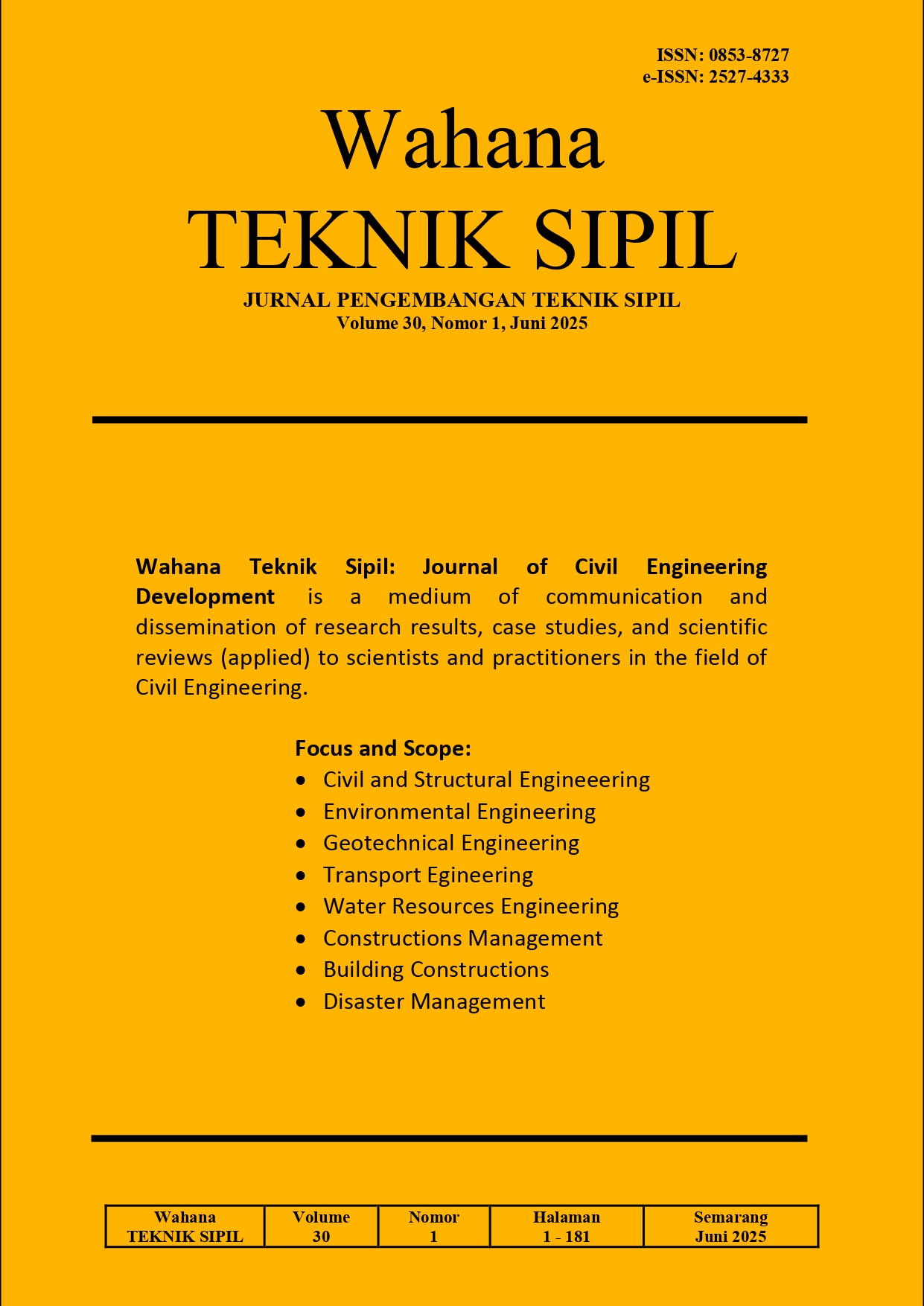STUDI KERETAKAN GEDUNG DAN AKSES JALAN KAMPUS POLITEKNIK PEKERJAAN UMUM DI KOTA SEMARANG
DOI:
https://doi.org/10.32497/wahanats.v30i1.6314Abstract
The MBH Campus, Public Works Polytechnic (PUtech) located in Semarang City began construction in 2021 - 2022 and functional in early 2023. Six months after its first operation, much damage was found to the building and access roads where there were many cracks in the walls with the same pattern and widening and collapsing in several parts of the garden and access roads that widened over time. A study was conducted to identify the cause of the damage that occurred. The study began by identifying the level of damage to the PUtech campus building and making assumptions regarding the cause of the damage. A more detailed investigation was carried out to strengthen the possibility of suspicions. The analysis was carried out based on the results of field measurements, non-destructive material tests, and soil characteristic tests on the building. The study's results showed a tendency for the building to subside to the north by 0-4 cm per year. The subsidence did not indicate conditions that were dangerous to the building structure because it occurred evenly. The base soil is in the form of cohesive inorganic clay with moderate plasticity so there is a high potential for soil expansion. The soft base soil, classified as soft soil, has the potential for consolidation up to 40 cm due to the existing building load.
Downloads
Published
Issue
Section
License
Copyright (c) 2025 ADITYO BUDI UTOMO, Agung Bhakti Utama, Laely Fitria Hidayatiningrum, Andi Patiroi

This work is licensed under a Creative Commons Attribution 4.0 International License.
Authors who publish with this journal agree to the following terms:Authors retain copyright and grant the journal right of first publication with the work simultaneously licensed under a Creative Commons Attribution License that allows others to share the work with an acknowledgement of the work's authorship and initial publication in this journal.
Authors are able to enter into separate, additional contractual arrangements for the non-exclusive distribution of the journal's published version of the work (e.g., post it to an institutional repository or publish it in a book), with an acknowledgement of its initial publication in this journal.
Authors are permitted and encouraged to post their work online (e.g., in institutional repositories or on their website) prior to and during the submission process, as it can lead to productive exchanges, as well as earlier and greater citation of published work (See The Effect of Open Access).






